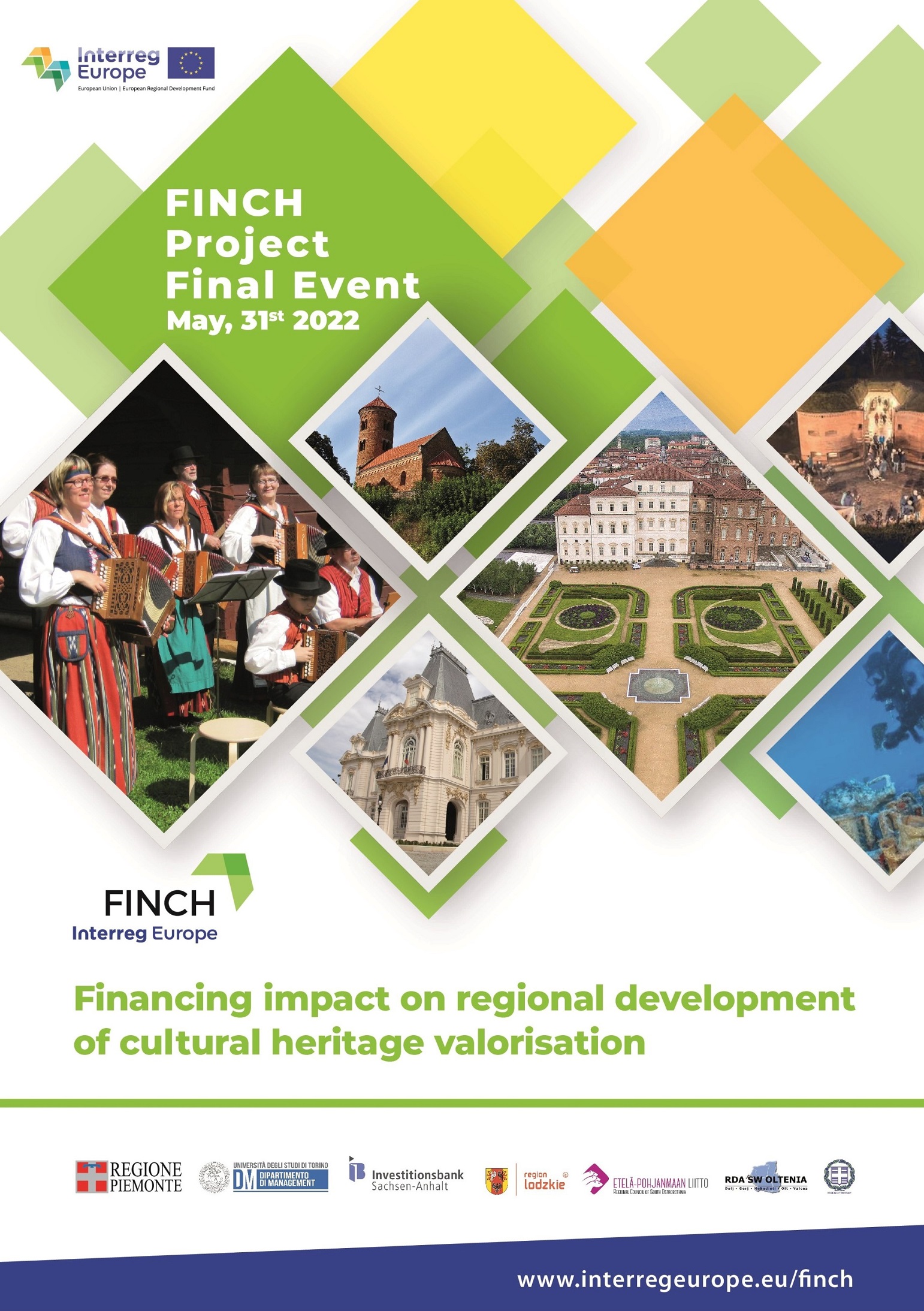7 best practices from Piemonte Region, Italy and South Ostrobothnia Region in Finland, were presented during the Second Stakeholders Group Meeting, in Craiova, which is part of the “Interregional Learning” phase of the project. This was an opportunity for FINCH stakeholders to discuss possible transfer of experiences in the regional context and to share their opinion on cultural heritage and the possibility to address financial instruments.
The meeting Agenda was structured as follows:
• Short overview of the project implementation stage;
• Presentation of the best practices identified by the Italian Lead Partner, Piemonte Region: Three palaces for culture: “Polo Culturale di Biella Piazzo”- a unique space, hosting cultural events in a charming union between public place and private residence, Exilles Fortress – with a focus on private management and funds for new use of the Fort (recovery of historical and architectural features; re-functionalization of spaces), OGR Torino (Officine Grandi Riparazioni) - former nineteenth century industrial 'cathedral' in the heart of Turin, entirely redeveloped by Fondazione CRT as an international hub for artistic experimentation, scientific, technological and industrial research and Consulta di Torino - an organization involving over 30 companies, created for the promotion of cultural/artistic heritage, investing in the artistic and historical heritage in Piedmont, in close cooperation with state institutions and conservation departments.
• Presentation of the best practices identified by the Finnish Partner, The Regional Council of South-Ostrobothnia: Kalevan Navetta – space for cultural services, a building initially destinated for agriculture and transformed into an art and event venue, Finnish Tango – valorizing the intangible cultural heritage, Adopt a piece of art - a sculpture project, in Ähtäri
• Presentation of the “Living document on financial instruments and regulatory frameworks for the introduction of partnership with private sector”
Also, the stakeholders discussed about the importance of the industrial patrimony, the introduction in Romanian legislation of the cultural landscape concept.











